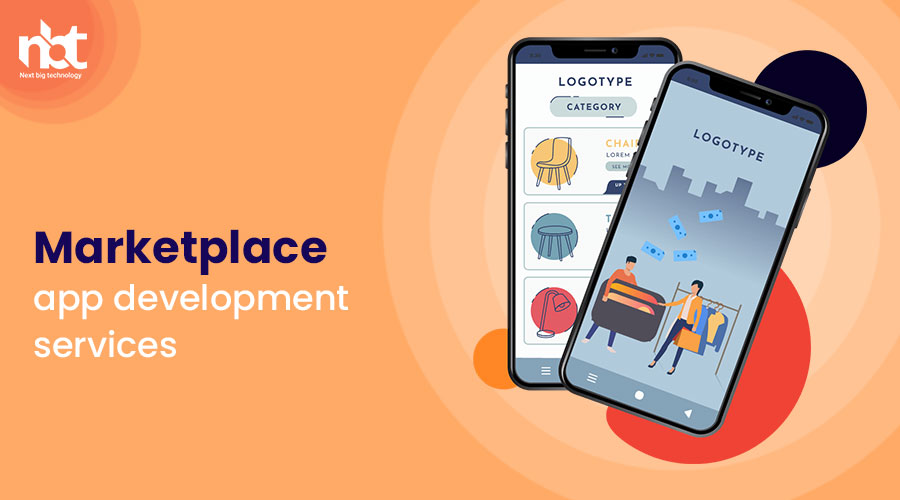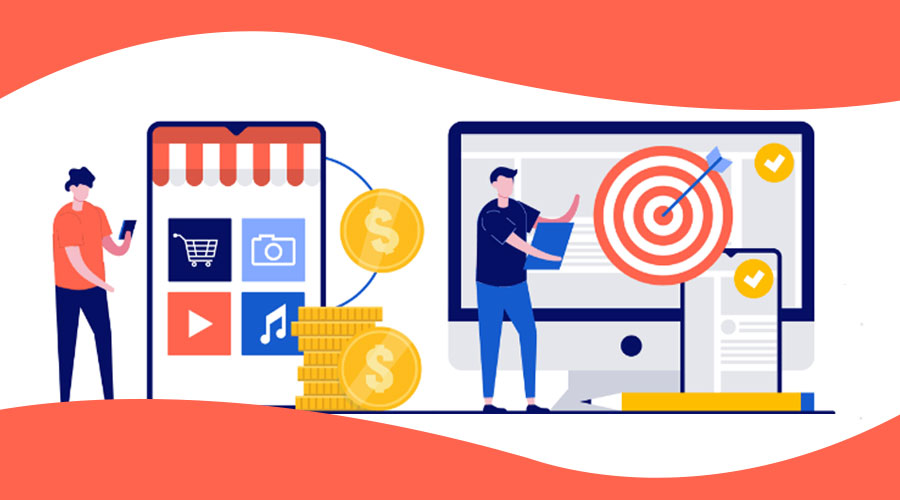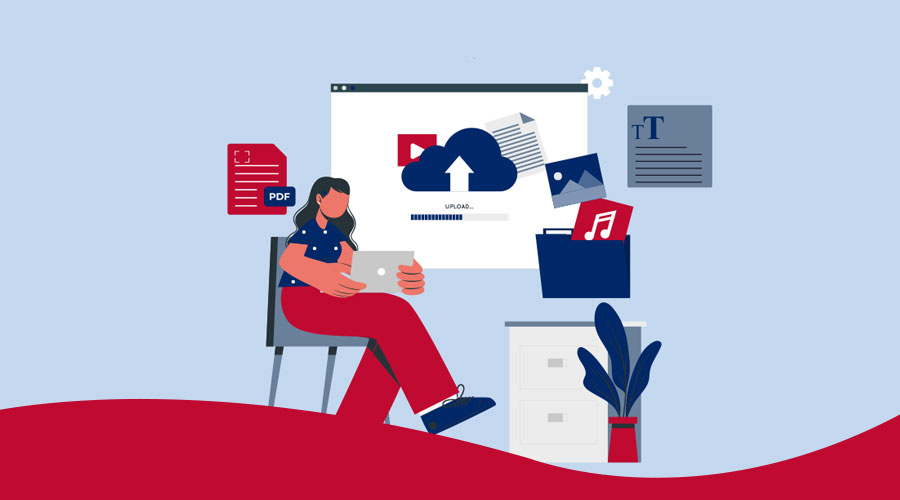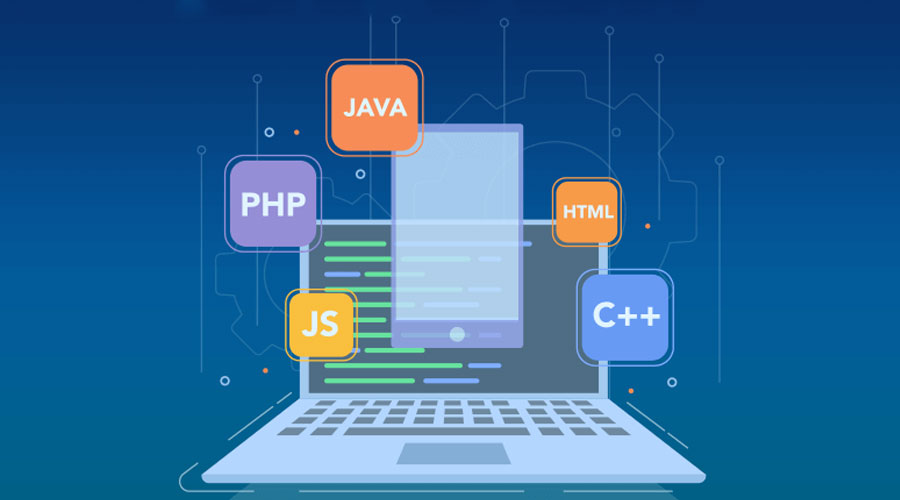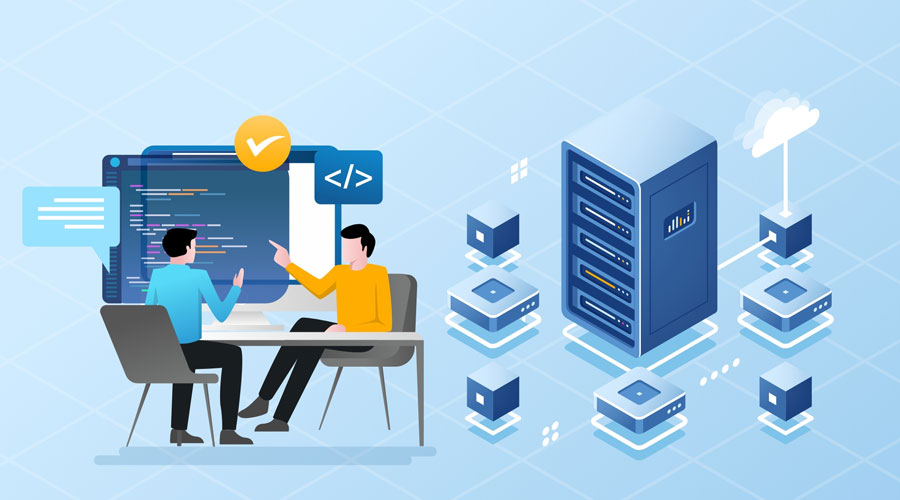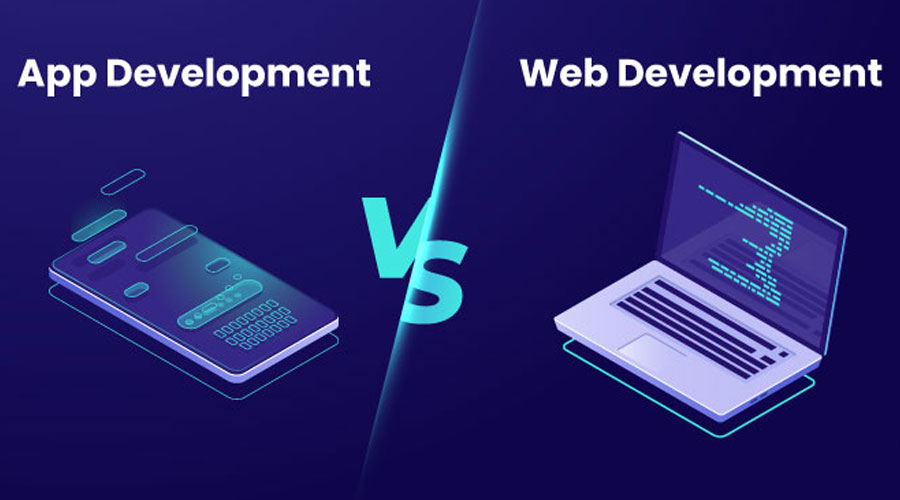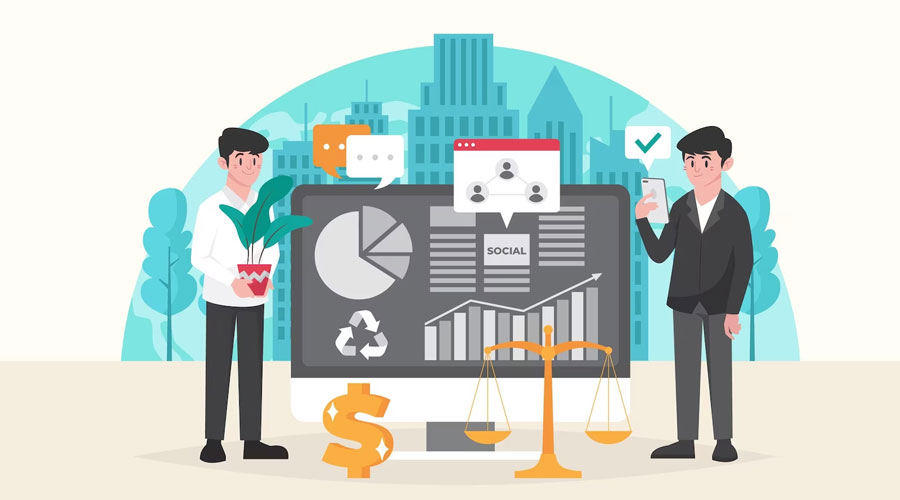Table of Contents
Introduction to Marketplace App Development Services
In the dynamic landscape of the digital era, marketplace app development services have emerged as a pivotal driver of business success. These services have revolutionized the way we conduct commerce, connecting buyers and sellers on a global scale through convenient and user-friendly platforms. This introductory section delves deeper into the world of marketplace app development services, shedding light on their significance and the transformative role they play in the modern economy.
The Digital Transformation
The advent of the internet and the proliferation of smartphones have ushered in a digital revolution, redefining traditional business models and consumer behavior. This transformation has given rise to the concept of online marketplaces, where products, services, and information can be seamlessly exchanged with a few taps on a screen.
Marketplace apps are at the forefront of this transformation, offering a bridge between consumers and businesses, independent sellers and buyers, service providers and clients. These apps have become a central hub for conducting transactions, facilitating the exchange of goods and services, and providing a robust platform for entrepreneurs and established businesses to expand their reach.
The Significance of Marketplace Apps
Marketplace apps hold immense significance in the modern business landscape, and their impact reverberates across various sectors. Here are some key reasons for their importance:
- Global Reach: One of the most compelling features of marketplace apps is their ability to transcend geographical boundaries. Unlike traditional brick-and-mortar stores, these apps allow businesses to cater to a vast and diverse global audience, unlocking new markets and opportunities.
- Cost-Effective: The cost of establishing and maintaining a physical store can be prohibitively expensive. Marketplace apps provide a cost-effective alternative, eliminating overhead costs like rent, utilities, and physical infrastructure, thereby enabling businesses to allocate resources more efficiently.
- Convenience: Convenience is at the heart of marketplace apps. They empower consumers to explore, compare, and purchase products and services from the comfort of their homes or while on the go. Simultaneously, sellers can efficiently manage their inventory, process orders, and engage with customers through a centralized platform.
- Scalability: Marketplace apps are inherently scalable. As the number of sellers and products grows, so does the app’s potential for revenue. This scalability offers businesses the flexibility to expand and adapt to market changes seamlessly.
- Data-Driven Insights: Marketplace apps collect an abundance of data on user behavior and preferences. This data can be harnessed to make informed decisions, personalize user experiences, and optimize marketing strategies, ultimately leading to improved customer satisfaction and increased profitability.
In essence, marketplace app development services have disrupted traditional business models, offering a plethora of advantages to both businesses and consumers. They have not only expanded the scope of commerce but have also driven innovation and competition to new heights.
The journey of creating a successful marketplace app is marked by various stages, from conceptualization to post-launch maintenance. Each step demands careful consideration and strategic planning, and we’ll delve into these stages in more detail as we progress through this comprehensive article on marketplace app development services.
Understanding the Marketplace App Ecosystem
In the ever-evolving landscape of digital commerce, the marketplace app ecosystem has become a dynamic and diverse environment. These ecosystems encompass a wide range of platforms and services that facilitate online transactions, connecting buyers and sellers in a virtual marketplace. To navigate this complex and thriving ecosystem successfully, it’s crucial to understand its components, dynamics, and the key players involved. In this article, we’ll delve into the various aspects of the marketplace app ecosystem and shed light on its significance in today’s business world.
-
Types of Marketplace Apps
Marketplace apps come in various forms, each catering to different industries and niches. Understanding these types is essential for both entrepreneurs and users:
1.1. E-commerce Marketplaces
E-commerce marketplaces, like Amazon and eBay, connect buyers and sellers in the world of retail. These platforms offer a wide range of products, from electronics to clothing, and provide a convenient shopping experience for consumers.
1.2. Service Marketplaces
Service marketplaces, such as Upwork and Airbnb, focus on connecting service providers with customers. These platforms allow users to access a broad spectrum of services, from freelance work to vacation rentals.
1.3. Niche Marketplaces
Niche marketplaces cater to specific industries or interests. Examples include Houzz for home improvement and Etsy for handmade and vintage items. Niche platforms offer a tailored experience for users with specific needs.
1.4. Peer-to-Peer (P2P) Marketplaces
P2P marketplaces facilitate transactions between individuals. Companies like Craigslist and Facebook Marketplace allow users to buy and sell goods directly to one another, often in local markets.
1.5. B2B Marketplaces
Business-to-business marketplaces, such as Alibaba and ThomasNet, focus on connecting businesses for wholesale purchases, supplier relationships, and other commercial activities.
-
Key Players in the Ecosystem
The marketplace app ecosystem consists of several key players, each contributing to the overall functionality and success of these platforms:
2.1. Buyers
Buyers are the customers using marketplace apps to purchase products or services. They drive the demand and fuel the growth of the ecosystem. User experience, security, and convenience are crucial factors for buyers.
2.2. Sellers
Sellers are individuals or businesses offering products or services on the platform. They play a critical role in fulfilling the demand created by buyers. Seller tools, access to a broad customer base, and secure payment processing are essential for sellers.
2.3. Marketplace Operators
Marketplace operators are the companies or individuals who create and manage the platform. They are responsible for ensuring the app’s functionality, security, and user experience. They earn revenue through various monetization strategies, such as transaction fees, subscription models, or advertising.
2.4. Payment Processors
Payment processors are integral to the ecosystem, ensuring secure transactions between buyers and sellers. Popular payment processors include PayPal, Stripe, and Square. The ability to support various payment methods is essential for a marketplace app’s success.
2.5. Third-Party Developers
Third-party developers create add-ons, extensions, and integrations that enhance the functionality of marketplace apps. They contribute to the ecosystem by providing additional tools and features for users.
2.6. Regulatory Authorities
Regulatory authorities play a role in shaping the marketplace app ecosystem by implementing rules and regulations that govern online commerce. These regulations may involve taxation, consumer protection, data privacy, and more.
-
The Dynamics of the Marketplace App Ecosystem
Understanding the dynamics of the marketplace app ecosystem is essential for anyone looking to thrive within it. Here are some key dynamics at play:
3.1. Network Effects
Marketplace apps benefit from network effects, where the value of the platform increases as more buyers and sellers join. A larger user base attracts more users, creating a virtuous cycle of growth.
3.2. Trust and Safety
Establishing trust and safety measures is paramount. Users need to feel secure when conducting transactions on the platform. Marketplaces must implement mechanisms to verify user identities, handle disputes, and prevent fraud.
3.3. Monetization Strategies
Marketplace operators must carefully select monetization strategies that align with the platform’s goals and user expectations. The choice of transaction fees, subscription models, or advertising can impact revenue and user retention.
3.4. Data-Driven Insights
Data analytics is a powerful tool in the marketplace app ecosystem. Marketplaces collect vast amounts of data on user behavior, preferences, and transactions. This data can be leveraged to make informed decisions and optimize user experiences.
3.5. Competition and Differentiation
Competition is fierce in the marketplace app ecosystem. To stand out, platforms must differentiate themselves through unique features, better user experiences, or by catering to specific niches.
3.6. Mobile Responsiveness
Given the increasing use of mobile devices for online transactions, marketplace apps must be optimized for mobile use. Mobile responsiveness is essential to capture a broader audience.
-
Challenges and Opportunities
The marketplace app ecosystem presents both challenges and opportunities:
4.1. Challenges
- Regulatory Compliance: Keeping up with evolving regulations can be challenging, especially when operating in multiple regions.
- Security: Protecting user data and transactions from fraud and cybersecurity threats is an ongoing concern.
- Trust Building: Establishing trust among users, especially in P2P marketplaces, can be difficult.
- Competition: The competitive landscape can make it challenging for new entrants to gain traction.
4.2. Opportunities
- Global Reach: Marketplace apps have the potential to reach a global audience.
- Scalability: The ability to scale the platform as user and product/service listings grow offers significant opportunities for expansion.
- Data-Driven Growth: Leveraging data for personalized user experiences and targeted marketing can drive growth.
- Innovation: The ever-evolving tech landscape provides opportunities for innovation in marketplace apps.
Key Features and Functionalities
when developing a marketplace app, incorporating key features and functionalities is crucial for providing value to users and enhancing the user experience. Here are some important add-on features and functionalities to consider:
- User Profiles:
- Allow users to create and manage their profiles with personal information, profile pictures, and contact details.
- Enable users to view and edit their transaction history, reviews, and ratings.
- Search and Filters:
- Implement advanced search options, filters, and sorting to help users find products or services more efficiently.
- Incorporate geolocation-based search to show nearby listings.
- Reviews and Ratings:
- Allow buyers to leave reviews and ratings for sellers and products/services, enhancing trust and transparency.
- Implement a review moderation system to ensure the authenticity of reviews.
- Messaging and Notifications:
- Integrate a real-time messaging system for communication between buyers and sellers.
- Send push notifications for order updates, messages, and important app events.
- Payment Gateway:
- Securely handle transactions by integrating multiple payment options such as credit/debit cards, digital wallets, and bank transfers.
- Implement a secure payment gateway to protect user financial information.
- Inventory Management:
- Offer sellers tools to manage their inventory, including adding, updating, and removing listings.
- Implement low-stock alerts and inventory tracking to help sellers manage their products or services effectively.
- Shopping Cart:
- Allow users to add items to a shopping cart for easy checkout and multiple-item purchases.
- Implement a one-click checkout option for registered users.
- Order Management:
- Provide a clear order history for buyers and sellers, with order status updates and tracking information.
- Offer tools for sellers to manage and fulfill orders efficiently.
- Geolocation Services:
- Use GPS technology to provide users with location-based services, such as finding nearby sellers or services.
- Implement geofencing for targeted promotions and notifications.
- Customer Support:
- Offer a customer support chat or ticket system for addressing user inquiries and resolving issues.
- Provide a knowledge base or FAQ section for common questions and troubleshooting.
- Social Integration:
- Enable users to link their social media profiles and share their activity on the marketplace app.
- Implement social login options for quick registration.
- Analytics and Reporting:
- Incorporate data analytics tools to track user behavior, traffic, and conversion rates.
- Provide sellers with detailed sales reports and insights.
- Multiple Language and Currency Support:
- Make the app accessible to a global audience by supporting multiple languages and currencies.
- Allow users to switch between languages and currencies easily.
- Admin Dashboard:
- Develop a robust admin dashboard to monitor and manage user activity, listings, payments, and reported issues.
- Enable administrators to take necessary actions, such as suspending or banning users who violate the app’s policies.
- Integration with Third-Party Services:
- Integrate with third-party services like shipping carriers, payment processors, and inventory management tools to streamline operations.
- Marketing and Promotions:
- Provide sellers with tools for creating and managing promotional campaigns, discounts, and coupons.
- Implement a referral program to encourage users to invite friends and family.
- Data Security and Privacy:
- Prioritize data security and user privacy by implementing encryption, secure authentication, and compliance with data protection regulations.
By incorporating these key features and functionalities into your marketplace app, you can create a robust and user-friendly platform that attracts both buyers and sellers while ensuring a smooth and secure experience for all users.
Technology Stack and Platform Considerations
Building a successful marketplace app involves more than just conceptualizing and developing the app itself. It requires careful consideration of the technology stack and platform choices. The technology stack and platform on which a marketplace app is built can significantly impact its performance, scalability, and user experience. In this article, we’ll explore the technology stack and platform considerations in marketplace app development.
-
Technology Stack
The technology stack is a crucial aspect of marketplace app development, encompassing the programming languages, frameworks, libraries, and tools used to build the app. The right technology stack can make a substantial difference in the app’s functionality and maintainability.
1.1. Front-end Technologies
Front-end development is what the users interact with, so it’s essential to choose technologies that provide a responsive and intuitive user experience. Some commonly used front-end technologies include:
- HTML5, CSS3, and JavaScript for creating the user interface.
- JavaScript frameworks like React, Angular, or Vue.js for building dynamic and interactive user interfaces.
- CSS preprocessors such as SASS or LESS for easier styling.
1.2. Back-end Technologies
The back-end of a marketplace app manages user data, transactions, and business logic. The choice of back-end technologies can affect the app’s security, performance, and scalability. Commonly used back-end technologies include:
- Server-side languages like Python, Ruby, Node.js, Java, or PHP for handling business logic.
- Databases, such as PostgreSQL, MySQL, MongoDB, or Cassandra, for storing and retrieving data.
- RESTful or GraphQL APIs for communication between the front-end and back-end.
1.3. Mobile App Development
If you intend to create mobile apps for iOS and Android in addition to a web platform, you’ll need to consider mobile app development technologies. Common choices include:
- Native app development using Swift/Obj-C for iOS and Java/Kotlin for Android.
- Cross-platform development with frameworks like React Native, Flutter, or Xamarin.
1.4. Cloud Services
Leveraging cloud services can enhance the scalability and reliability of your marketplace app. Services like AWS, Google Cloud, or Microsoft Azure provide infrastructure and tools for hosting, storage, and data analysis.
1.5. DevOps Tools
DevOps tools and practices can streamline development, testing, and deployment processes. Tools like Jenkins, Docker, and Kubernetes facilitate continuous integration and continuous delivery (CI/CD).
1.6. Security Measures
Ensuring the security of your marketplace app is paramount. Consider integrating security measures such as SSL/TLS encryption, OAuth for user authentication, and security testing tools to protect user data and transactions.
-
Platform Considerations
Platform considerations encompass deciding whether to build a web-based app, mobile app, or a combination of both. Additionally, you need to choose the platform(s) for your mobile apps.
2.1. Web Platform
Building a web-based marketplace app is a cost-effective way to reach a broad audience. Users can access it from any web browser without the need for platform-specific development. Responsive web design ensures that the app adapts to various screen sizes.
2.2. Mobile Apps
Developing mobile apps offers a more immersive user experience and can take advantage of device-specific features. Consider the following options:
- Native Apps: Native apps offer the best performance and access to platform-specific features. However, they require separate development for iOS and Android.
- Cross-Platform Apps: Cross-platform frameworks like React Native or Flutter allow you to build apps for both iOS and Android using a single codebase, reducing development time and costs.
2.3. Platform Selection
If you decide to create mobile apps, you’ll need to choose the platforms for which you want to develop (iOS, Android, or both).
- iOS: To develop for iOS, you’ll need to use Apple’s development tools and languages (Swift or Objective-C). iOS apps can be distributed through the Apple App Store.
- Android: Android app development is typically done in Java or Kotlin, and apps are distributed through the Google Play Store.
-
Platform Adaptability
Consider the adaptability of your marketplace app on various platforms and devices. Ensure that the user experience is consistent and optimized across web browsers, iOS devices, and Android devices.
-
Scalability and Performance
The platform you choose should support the scalability and performance requirements of your marketplace app. Cloud-based infrastructure and content delivery networks (CDNs) can enhance both scalability and performance.
-
Maintenance and Updates
Regular maintenance and updates are essential to keep the app running smoothly. Consider how easily you can deploy updates across different platforms and devices.
Backend Development and Database Management
In the world of marketplace app development, the frontend, with its user-friendly interfaces and eye-catching designs, often garners much of the attention. However, the real power and functionality of these apps lie in their backend development and database management. This article delves into the critical aspects of backend development and database management in marketplace app development and their significance in ensuring a seamless and efficient user experience.
-
The Significance of Backend Development
The backen1.1. Server-Side Logicd of a marketplace app is where the server-side logic resides. This includes the algorithms, business rules, and authentication processes that enable the app to function. Whether it’s processing transactions, managing user accounts, or facilitating communication between buyers and sellers, the backend is the engine that drives the app.
1.2. Security
Security is a paramount concern in the realm of marketplace apps. The backend is where sensitive data such as user information, payment details, and transaction history are stored. A robust backend should implement encryption, authentication, and authorization mechanisms to protect this data from unauthorized access and cyber threats.
1.3. Scalability
As the user base and the volume of transactions grow, the backend must be able to scale seamlessly. This means that it should handle increased traffic and data without experiencing a drop in performance. Scalability is vital for marketplace apps to accommodate more sellers, buyers, and listings.
1.4. Customization
Backend development allows for the customization of marketplace apps. This is essential for creating a unique and tailored user experience. For instance, sellers might need specific tools to manage their inventory, while buyers may require advanced search and recommendation features.
1.5. Seamless Integration
Marketplace apps often need to integrate with various third-party services, including payment gateways, shipping providers, and external APIs. The backend is responsible for ensuring these integrations work seamlessly, enabling smooth transactions and interactions.
-
The Role of Database Management
2.1. Data Storage
Marketplace apps deal with vast amounts of data, from user profiles to product listings and transaction history. Efficient database management is essential to organize, store, and retrieve this data quickly. The choice of database technology, whether it’s relational databases (e.g., MySQL, PostgreSQL) or NoSQL databases (e.g., MongoDB, Cassandra), has a significant impact on performance and scalability.
2.2. Data Retrieval
Quick and accurate data retrieval is crucial for a smooth user experience. Database queries must be optimized to provide users with the information they need promptly. This includes searching for products, displaying user profiles, and processing transactions.
2.3. Real-Time Updates
Marketplace apps often require real-time updates for features like messaging, bidding, and inventory management. Database management plays a crucial role in ensuring that these updates are reflected instantly across the platform.
2.4. Data Redundancy
Maintaining data integrity and preventing data loss is a fundamental concern. Database management should implement redundancy and backup strategies to protect against data loss due to hardware failures or other unforeseen issues.
2.5. Data Analysis
Data analytics are invaluable for marketplace app owners. Database management allows for the collection and analysis of user data, which can be used to make informed business decisions, improve user experiences, and optimize marketing strategies.
-
Choosing the Right Technologies
Selecting the right technologies for backend development and database management is a pivotal decision in marketplace app development. Consider the following factors:
3.1. Technology Stack
Choose a technology stack that aligns with your project’s requirements and scalability goals. For backend development, popular choices include Node.js, Ruby on Rails, Python (Django), and Java (Spring). When it comes to databases, make informed decisions about whether to use relational databases or NoSQL databases based on the data structure and scalability needs.
3.2. Cloud Services
Leveraging cloud services like Amazon Web Services (AWS), Google Cloud Platform (GCP), or Microsoft Azure can simplify backend infrastructure management and enhance scalability. Cloud platforms offer a wide array of services, from hosting to database management, that can be cost-effective and efficient.
3.3. Mobile and Web Compatibility
Ensure that your backend and database management systems are compatible with both mobile and web platforms. Cross-platform compatibility is essential for marketplace apps aiming to reach a diverse user base.
3.4. Developer Expertise
Select technologies that your development team is well-versed in. Expertise in the chosen technologies will streamline development and maintenance processes.
Mobile App Development vs. Web App Development
In today’s digital age, businesses and entrepreneurs are presented with a crucial decision when it comes to reaching their target audience through digital platforms. Should they invest in mobile app development or web app development, or perhaps a combination of both? Each approach has its unique advantages and considerations. In this article, we’ll explore the differences between mobile app development and web app development, helping you make an informed choice for your business.
-
Mobile App Development
Mobile app development involves creating applications specifically designed to run on mobile devices, such as smartphones and tablets. Here are some key points to consider:
1.1. Platform Specificity
Mobile apps are platform-specific. This means they are developed for a particular operating system, such as iOS (Apple) or Android (Google). Businesses often need to create separate apps for each platform, which can increase development costs.
1.2. Enhanced Performance
Mobile apps generally offer better performance compared to web apps. They can take full advantage of a device’s hardware and can work offline. This is especially important for applications that require high-speed interactions, like gaming or multimedia apps.
1.3. Access to Device Features
Mobile apps can access various device features, such as the camera, GPS, and push notifications, making them ideal for applications that require these functionalities, like fitness or navigation apps.
1.4. App Store Presence
Publishing your mobile app on app stores like Apple’s App Store and Google Play can provide increased visibility and access to a wide user base. Users often trust apps available on these platforms.
1.5. Better User Engagement
Mobile apps are known for providing a more immersive and engaging user experience. This can lead to higher user retention and loyalty.
1.6. Development Languages
Mobile app development typically involves languages like Swift or Objective-C for iOS and Java or Kotlin for Android.
-
Web App Development
Web app development focuses on creating applications that run in web browsers. Here are some key points to consider:
2.1. Cross-Platform Compatibility
Web apps are accessible from various devices and operating systems through a web browser. They are inherently cross-platform and require no installation, making them accessible to a broader audience.
2.2. Lower Development Costs
Developing a web app often requires less time and resources compared to building separate mobile apps for multiple platforms. Maintenance and updates are also more cost-effective.
2.3. No App Store Hurdles
Web apps do not need to go through the approval process of app stores. This means quicker deployment and fewer restrictions on content or features.
2.4. Continuous Updates
Web apps can be updated instantly on the server, ensuring all users are using the latest version without requiring manual updates.
2.5. Limited Access to Device Features
Web apps have limited access to device features compared to mobile apps. While they can utilize some features, they can’t match the level of access and control that mobile apps have.
2.6. Development Languages
Web app development typically involves web technologies like HTML, CSS, and JavaScript. These technologies are versatile and widely used.
-
Choosing the Right Path
The choice between mobile app development and web app development depends on several factors, including your business goals, target audience, budget, and the nature of your application. Here are some considerations to help you decide:
3.1. Target Audience
Consider the demographics of your target audience. If your audience primarily uses mobile devices and you want to provide an immersive experience, mobile app development may be more appropriate. For a broader and more accessible reach, web apps are a better choice.
3.2. Functionality
Think about the functionalities your app requires. If it heavily relies on device features like GPS, camera, or offline capabilities, mobile app development is the way to go. For simpler applications that do not require such features, a web app may suffice.
3.3. Budget
Consider your budget and resource constraints. Mobile app development can be costlier due to the need for separate development for iOS and Android. If you have a limited budget, web app development may be more economical.
3.4. Time-to-Market
If speed to market is crucial, web apps have the advantage of quicker development and deployment, as they don’t need to go through app store approval processes.
3.5. User Experience
Evaluate the desired user experience. If you aim to provide a highly interactive and engaging experience, mobile apps are generally more capable of delivering this compared to web apps.
Cost Analysis and Budgeting
Developing a marketplace app is not only an exciting venture but also a significant financial commitment. To ensure the success of your project, it’s essential to conduct a comprehensive cost analysis and create a realistic budget. In this section, we will explore the various expenses involved in marketplace app development and provide guidelines for budgeting effectively.
Understanding the Costs
-
Development Costs
1.1. Development Team: Your development team is the backbone of your project. It typically includes software developers, designers, quality assurance engineers, and project managers. The cost of hiring or outsourcing these professionals will depend on their experience and location.
1.2. Technology Stack: The choice of technology stack (programming languages, frameworks, and tools) significantly impacts development costs. More specialized technologies may require a higher budget.
1.3. Third-Party Integrations: If your marketplace app requires third-party integrations, such as payment gateways, location services, or communication APIs, you must budget for licensing and development costs.
-
Design and User Experience (UX)
2.1. User Interface (UI) Design: Creating an appealing and user-friendly interface is crucial for attracting and retaining users. UI design costs include graphic design, branding, and layout.
2.2. User Experience (UX) Design: Investing in UX design ensures that your app is easy to navigate and provides a positive user experience. This includes wireframing, prototyping, and user testing.
-
Infrastructure and Hosting
3.1. Server Costs: Marketplace apps require robust hosting solutions. The cost depends on factors such as server capacity, scalability, and the choice of cloud hosting providers (e.g., AWS, Azure, or Google Cloud).
3.2. Domain and SSL Certificate: Registering a domain and obtaining an SSL certificate is necessary for securing your app’s online presence. These costs are recurring annually.
-
Security and Compliance
4.1. Data Security: Protecting user data and payment information is paramount. Expenses include encryption services, security audits, and compliance with data protection regulations.
4.2. Legal Compliance: Marketplace apps must adhere to various regulations, including taxation, consumer protection, and privacy laws. Legal consultation and compliance efforts come with associated costs.
-
Marketing and User Acquisition
5.1. Marketing Campaigns: Plan for expenses related to marketing campaigns, which may include pay-per-click (PPC) advertising, social media marketing, content creation, and email marketing.
5.2. User Acquisition: Attracting users to your app through app store optimization (ASO), referral programs, and other user acquisition strategies requires budget allocation.
-
Maintenance and Updates
6.1. Ongoing Development: After the initial launch, you’ll need to allocate resources and budget for ongoing development, which includes bug fixes, feature enhancements, and performance improvements.
6.2. Hosting and Server Maintenance: Server maintenance costs, as well as domain and SSL certificate renewals, continue as long as your app is operational.
Budgeting Guidelines
- Start with a Detailed Plan: Begin by creating a detailed project plan that outlines all the features, functionalities, and design elements of your marketplace app. This will help you identify the specific costs associated with each aspect of development.
- Prioritize Features: Prioritize the features that are essential for the minimum viable product (MVP). This approach allows you to launch the app with core functionalities and gradually add more features as your budget permits.
- Allocate Contingency Funds: Unforeseen expenses often arise during app development. Allocate a contingency fund to cover unexpected costs, which are typically around 10-20% of your total budget.
- Explore Funding Options: Consider various funding options, such as personal savings, loans, investment, or crowdfunding, to ensure you have the financial resources needed for your project.
- Seek Competitive Quotes: When outsourcing development or hiring a development team, obtain quotes from multiple providers to ensure you are getting a competitive price.
- Regularly Review and Adjust: Continuously monitor your project’s financial progress and make adjustments to your budget as necessary. As your app grows, allocate more funds for marketing, user acquisition, and ongoing development.







